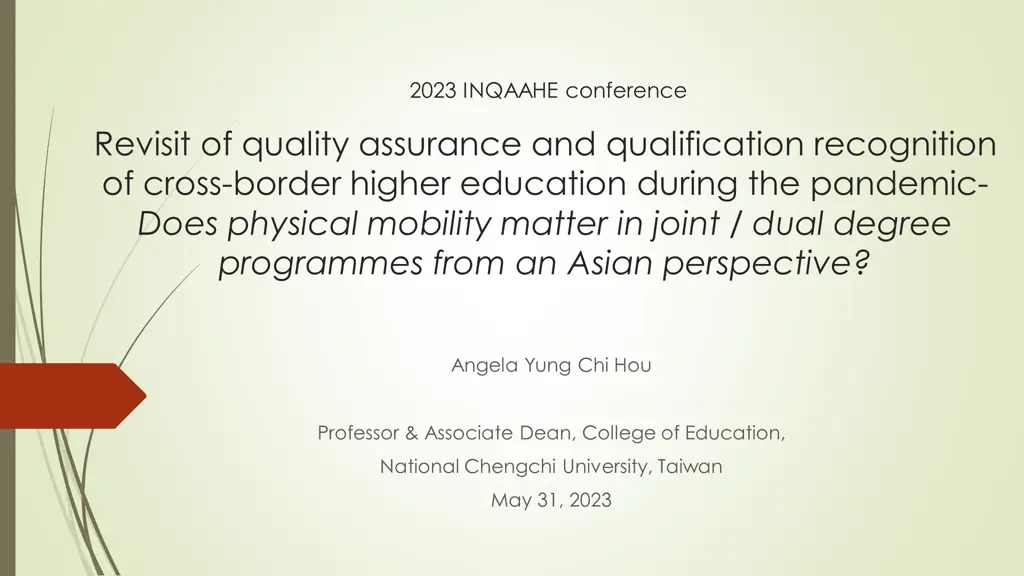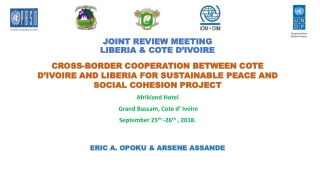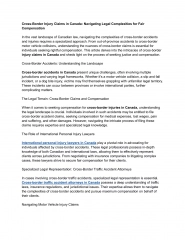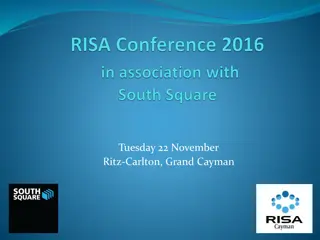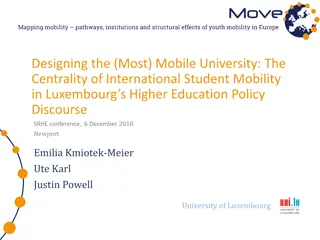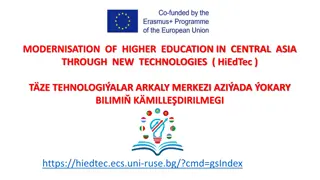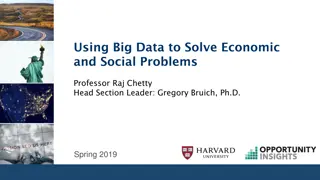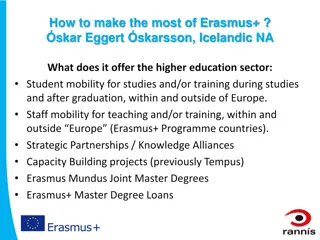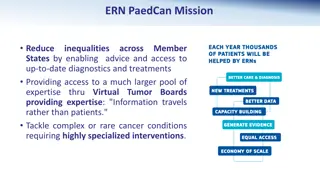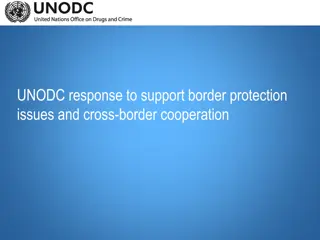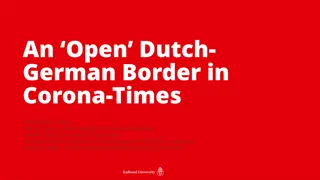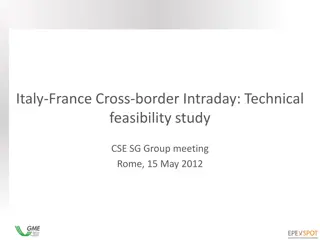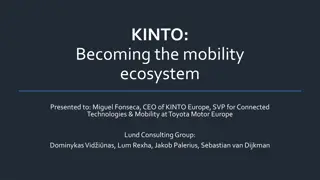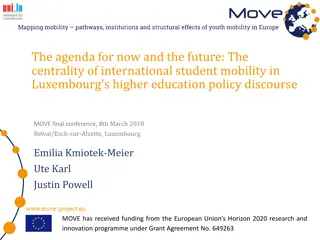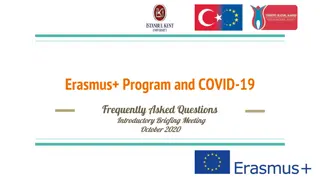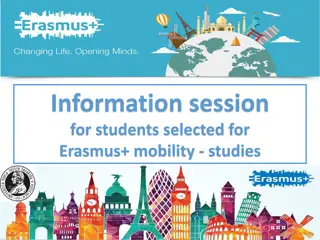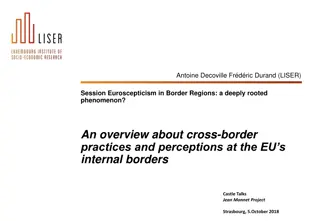Reimagining Cross-Border Higher Education Post-Pandemic: Insights on Student Mobility in Asia
Explore the impact of physical mobility in joint/dual degree programs during the pandemic from an Asian perspective. Discuss the growth of cross-border higher education, modes of delivery during the pandemic, and the relevance of quality assurance and qualification recognition.
Download Presentation

Please find below an Image/Link to download the presentation.
The content on the website is provided AS IS for your information and personal use only. It may not be sold, licensed, or shared on other websites without obtaining consent from the author. Download presentation by click this link. If you encounter any issues during the download, it is possible that the publisher has removed the file from their server.
E N D
Presentation Transcript
2023 INQAAHE conference Revisit of quality assurance and qualification recognition of cross-border higher education during the pandemic- Does physical mobility matter in joint / dual degree programmes from an Asian perspective? Angela Yung Chi Hou Professor & Associate Dean, College of Education, National Chengchi University, Taiwan May 31, 2023
Hou, Angela Yung Chi. (2016). Quality Assurance of Joint Degree Programs from the perspective of Quality Assurance Agencies: Experience in East Asia. Higher Education Research & Development. 35(3), pp. 473-487. (SSCI). Hou, Angela Yung Chi, Morse, B., Wang, W. (2017). Recognition of Academic Qualifications in Transnational Higher Education and Challenges for Recognizing a Joint Degree in Europe and Asia. Studies in Higher Education, 42:7, 1211-1228 (SSCI) Hou, Angela Yung Chi (2020). Quality assurance of joint degree programmes: what Asia can learn from Erasmus Mundus joint degree programmes in Europe. Globalisation, Societies and Education, 18, pp. 19-29 (SCOPUS)(ESCI) Hou, Angela Yung Chi, Hill, C., Chan, S. J., Chen, D. I. R. & Tang, M. (2021). Is Quality Assurance Relevant to Overseas Qualification Recognition in Asia? Examining Regulatory Framework and the Roles of Quality Assurance Agencies and Professional Accreditors. The Journal of Education and Work. 34 (3), 373-387
Outline of Presentation Introduction Research questions Research method Major findings Discussions and Conclusion
Growth of Cross-border Higher Education Cross-border higher education exerted external influences on higher education system reform throughout student mobility since 1990s. positive impacts on economic, cultural and social developments in a nation, facilitate the research and teaching/learning cooperation among higher education institutions (Stearns, 2009; Smith, 2010; Knight & McNamara, 2017, Hill, 2022) Global discourse and regional initiatives. Code of Good Practice in the Provision of Transnational Education in 2001 the Guidelines or Quality Provision in Cross-Border Higher Education 2005/ 2015 UNESCO/APQN Toolkit: Regulating the Quality of Cross Border Education in 2006 Tokyo Convention in 2011 Global Convention 2019 INQAAHE ISG 2022
Figure: Relevance of qualification recognition, quality assurance and global/ regional conventions in CBHE
Three modes of delivery during the pandemic physical student mobility (PSM) a leaner should travel and stay in another country for academic, professional, or cultural reasons virtual student mobility as a form of mobility that uses information and communication technologies to facilitate cross-border and/or inter-institutional academic, cultural, and experiential exchanges and collaboration which may be credit-bearing or not for credit hybrid mobility (HSM) an alternative form of mobility with more flexibility to adapt and to cope with both students demands and expectations of mobility activities, as well as those conditions that can realistically be provided
Joint/ Dual degree program in Asia A jointly developed and integrated curriculum and agreed-on credit recognition (Obst, Kuder, and Banks 2011, p. 9) feature characteristics of a joint/ dual degree program. The rapid growth of international joint / dual degree programmes have been prominent in Asia since 2000 There are several reasons for universities to develop joint and dual degree programs, particularly for the top research universities in Asia to enhance academic reputation, invigorate degree program system to become more interdisciplinary, to strengthen student employability During the pandemic , joint / dual degree programs suddenly shifted from a physical mode into a virtual delivery, quality and qualifications issues
Research questions How was quality assurance system relevant to qualification recognition of cross border higher education from a global discourse and a regional perspective? What common QA approaches were adopted by the top ranked universities in Asia to ensure quality of joint/ dual degree program via physical, virtual or hybrid delivery modes before and under COVID-19 pandemic? How did the top-ranked universities in Asia perceive quality and value of qualification of joint/ dual degree programs via different delivery modes?
Conceptual framework for linking mobility modes with quality of joint and dual degree programs in Asian context
Research method 7 In-depth interviews an online the top ranked 200 universities there were 50 responses from 13 countries, including 36 from top 200 universities in QS ranking and 34 from top 500 ranked institutions
Top three approaches of IQA, EQA and qualification recognition Top 1 IQA Having policies and regulations (73.54 %) formulating the process and procedures for student admission and progression collecting student feedback EQA National accreditor (38.70%) Government Qualification recognition Government (55.10%) Top 2 University Top 3 oversea accreditor from partner university National accreditor
Comparing the IQA and EQA implementation before the pandemic and during the pandemic more than 80 % of the program applied either a hybrid or a virtual mode, which inevitably resulted in the decreasing level of IQA as well as EQA most programs delivered in a physical mode tended to rely on EQA rather than IQA prior to the pandemic. (note: green-physical, red- hybrid, blue-virtual)
Level of respondents agreement over different delivery modes Delivery mode Mean SD Median 95% Confidence Interval Lowest 3.06 4.29 2.52 3.91 3.50 Highest 3.70 4.67 3.12 4.49 4.06 value of virtual delivery value of physical delivery Effectiveness of fully online Effectiveness of face to face Effectiveness of hybrid mode 3.38 4.48 2.82 4.20 3.78 1.12 0.68 1.06 1.03 1.00 3.50 5.00 3.00 4.00 4.00
The correlation between application of delivery mode and the level of effectiveness of a joint/ dual degree program VV VP EO EF EH the higher level the responding institutions agreed on physical mode, and the higher value of a qualification they would likely recognize value of virtual 1 value of physical -.16 1 .54 Effectiveness of fully online .07 1 .30 Effectiveness of face to face -.14 .24 1 .48 .60 .42 Effectiveness of hybrid mode -.05 1
Discussions Are Asian governments ready to new quality assurance practices in the era of the post pandemic? Does physical mobility matter in quality assurance of joint / dual degree programmes by top ranked universities in Asia?
Conclusion In most Asian nations, national accreditors are obligated to monitor quality of local universities and colleges, but they are not commissioned to serve as the gatekeepers of quality and qualification of joint and dual degree programs. a convergence between quality assurance and qualification recognition was not formed yet in most Asian nations. joint/ dual degree programs via physical mode is preferred and recognized by universities. However, hybrid mode has been widely accepted during the pandemic and in the post pandemic era. moving toward a convergence of quality assurance and qualification recognition would affirm value of a joint qualification in the future.
Q & A yungchi@nccu.edu.tw
1. International Higher Education, 114 (Spring), 38-39. Hou, A. Y. C. & Lu, I-Jung Grace (2023). Private Higher Education in Taiwan: From Prosperity to Adversity. 2. Researcher Brain Gain and Brain Drain and Research University Policy. Higher Education Policy (SSCI), pp.1-22. (online) Fu, Y. C*., V squez, J. M. ., Macasaet ,B. T., Hou, A. Y. C. , Powell, J. W. (2023). Game of Brains: Examining 3. involvement in external quality assurance of higher education from Asian QA perspectives does policy contextualization matter? Journal of Asian Public Policy, pp. 1-20. (online) SSCI Q1 Hou, Angela Yung Chi, Hill, C., Lin, A. F. Y. & Justiniano, D. (2022). The battle for legitimacy of student 4. measure new policy issues in higher education? The practices in Europe and Asia. European Journal of Higher Education, 12(1), 391-415. SCOPUS Q1 Kaiser, F., Melo, A. I. & Hou, Angela Yung Chi. (2022). Are quality assurance and rankings useful tools to 5. policy change in higher education after the year of 2016 in search of egalitarianism or pursuit of academic excellence? Studies in Higher Education, 47 (2), 338-351 (SSCI Q1) *Hou, Angela Yung Chi, Hill, Christopher, Hu, Zoe & Lin, Lily (2022). What is driving Taiwan government for 6. Digitalization, Innovation and Crisis Management of Higher Education and Quality Assurance? A Taiwan Case Study in Alignment with the INQAAHE Virtual Review. Higher Education Policy,35, 568 590. SSCI Q1 *Hou, Angela Yung Chi, Lu, I J. G., & Hill, C. (2022). What Has Been the Impact of COVID-19 on Driving 7. external quality assurance of higher education? A paradigm shift or QA disruption from quality assurance perspectives in Asia. Higher Education, 84, 935 954. SSCI Q1 *Hou, Angela Yung Chi, Hill, C., Justiniano, D., Lin, F. Y. A. (2022). Is employer engagement effective in
